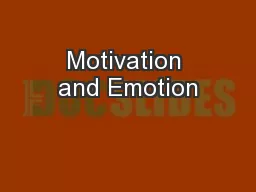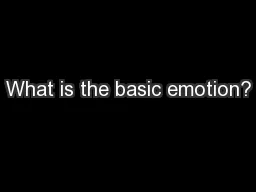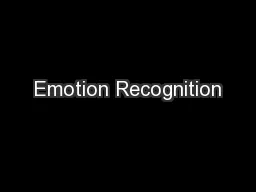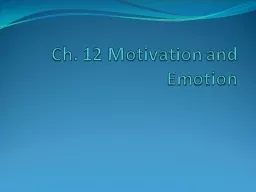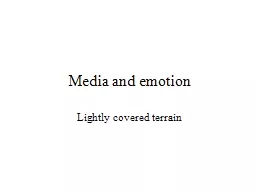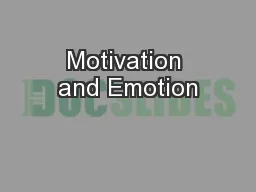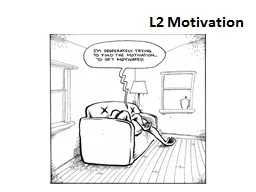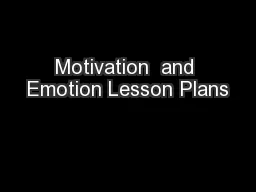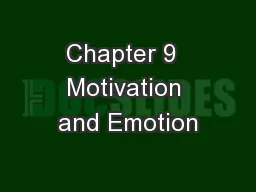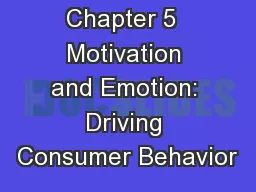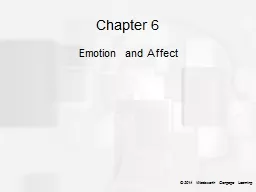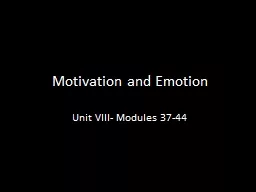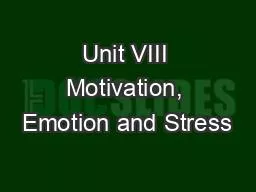PPT-Motivation and Emotion
Author : tawny-fly | Published Date : 2017-12-10
Based on Barrons AP Psych Test Prep Cerepak 2016 Why do people do what they do Motivation theories attempts to answer that question directly Motivations are feelings
Presentation Embed Code
Download Presentation
Download Presentation The PPT/PDF document "Motivation and Emotion" is the property of its rightful owner. Permission is granted to download and print the materials on this website for personal, non-commercial use only, and to display it on your personal computer provided you do not modify the materials and that you retain all copyright notices contained in the materials. By downloading content from our website, you accept the terms of this agreement.
Motivation and Emotion: Transcript
Download Rules Of Document
"Motivation and Emotion"The content belongs to its owner. You may download and print it for personal use, without modification, and keep all copyright notices. By downloading, you agree to these terms.
Related Documents

